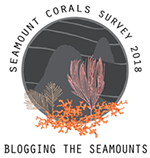December 16, 2018
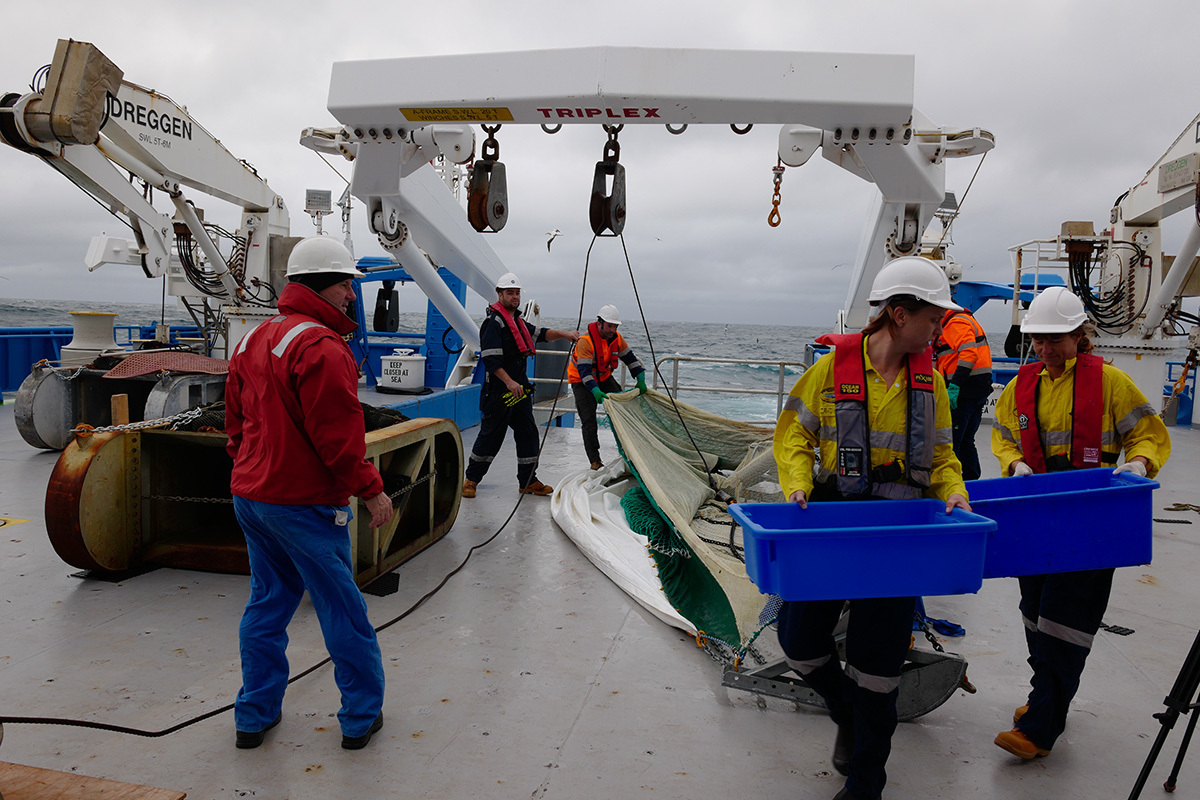
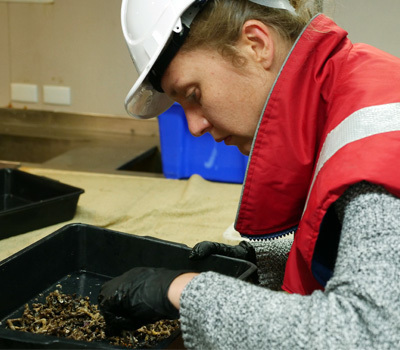
Day 24: Candice Untiedt, CSIRO
It’s 23:30 on 11 December and a collection of biologists stand under the sheltered area on the Aft deck. We’re fully kitted out in overalls, lumo vests, hard hats and boots, each with a bin in hand eagerly awaiting the arrival of the night’s trawl. Our principal investigator and trawl master on the sunset shift, Alan Williams of CSIRO, has conducted this trawl on a seamount called Andy’s Hill, a suspected recovery community in the Huon Marine Park, which was previously the site of bottom trawling for fish such as orange roughy.
The excitement on deck is palpable. We all chatter, to the soundtrack of the winch bringing the net closer, about what we would like to see come up in the haul today. Simon Grove from the Tasmanian Museum and Art Gallery (TMAG) would like some molluscs, no surprises there. Alexandra Weber from Museums Victoria puts in her brittlestar order, and several others cast their wishes. Of course, Kirrily Moore of TMAG and I would like to see some corals. We are particularly hopeful that one of the mystery fluffy yellow corals we’ve seen a lot of in the deep-tow camera footage are collected, but I would also really like to collect some of the bottlebrush gold corals, the group I am working on for my PhD, that we’ve also seen in the imagery.

When we are not processing biological samples in the wetlab, super-star video annotator Kylie Maguire, parks manager Dave Logan and myself are ensconced in the image processing lab working on the video and stills imagery collected from our deep-tow camera system. The aim of this work is to map the distribution of coral reefs in the areas that we have surveyed and to generate quadrats of known area on the still images so that we can classify the substratum and count and identify all the animals in them. This is the crux of my work onboard and a critical part of my research: how can we accurately, or rather how accurately can we identify soft corals from imagery.
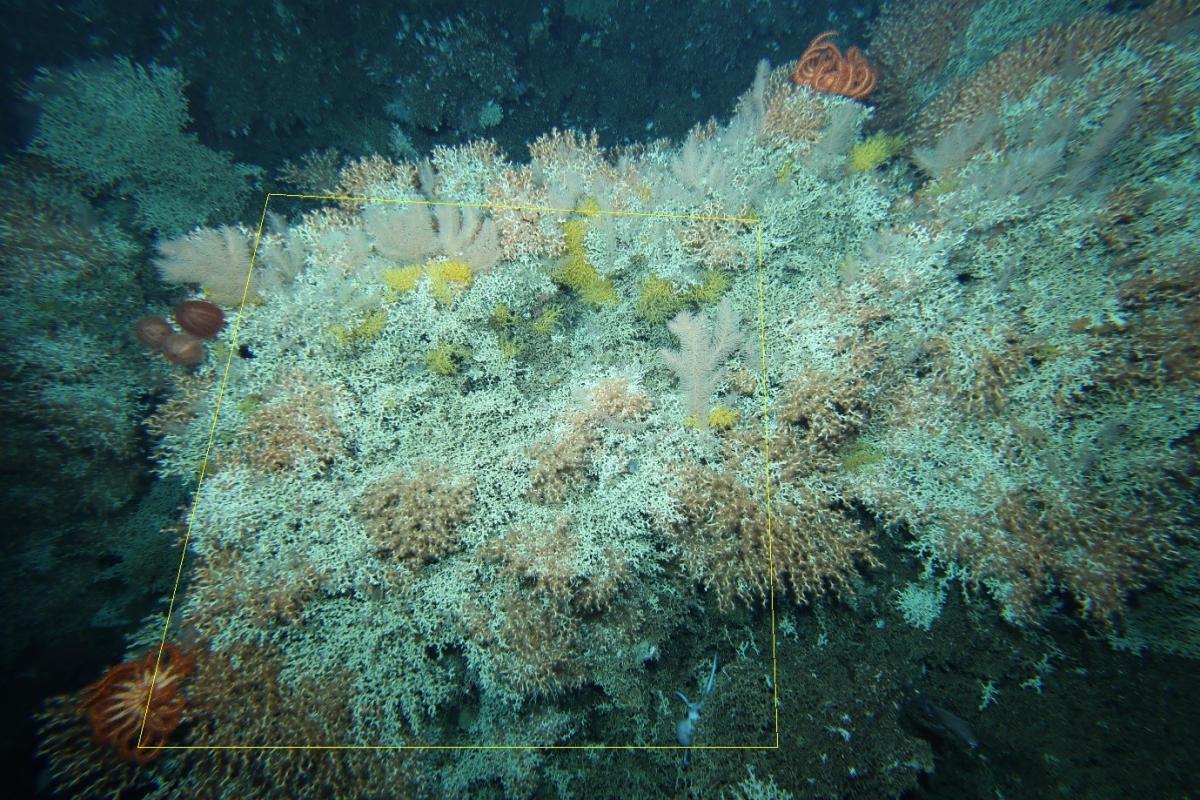
Finally, the trawl net emerges. There is a gold coral colony hanging onto the outside of the net and we have a taste of what’s inside: the biggest haul of gold corals any of us has ever seen! Because of this collection we now know that one of those mystery fluffy yellow soft corals is actually a Chrysogorgia gold coral and those large bottlebrush colonies are another species in the same genus that we collected from this area in 2007. Making these links between collected specimens and images is vital to accurately assessing the biodiversity of Tasmanian seamounts and means that in the future we’ll be able to assess if and how these communities change over time from imagery without having to make repeated collections.
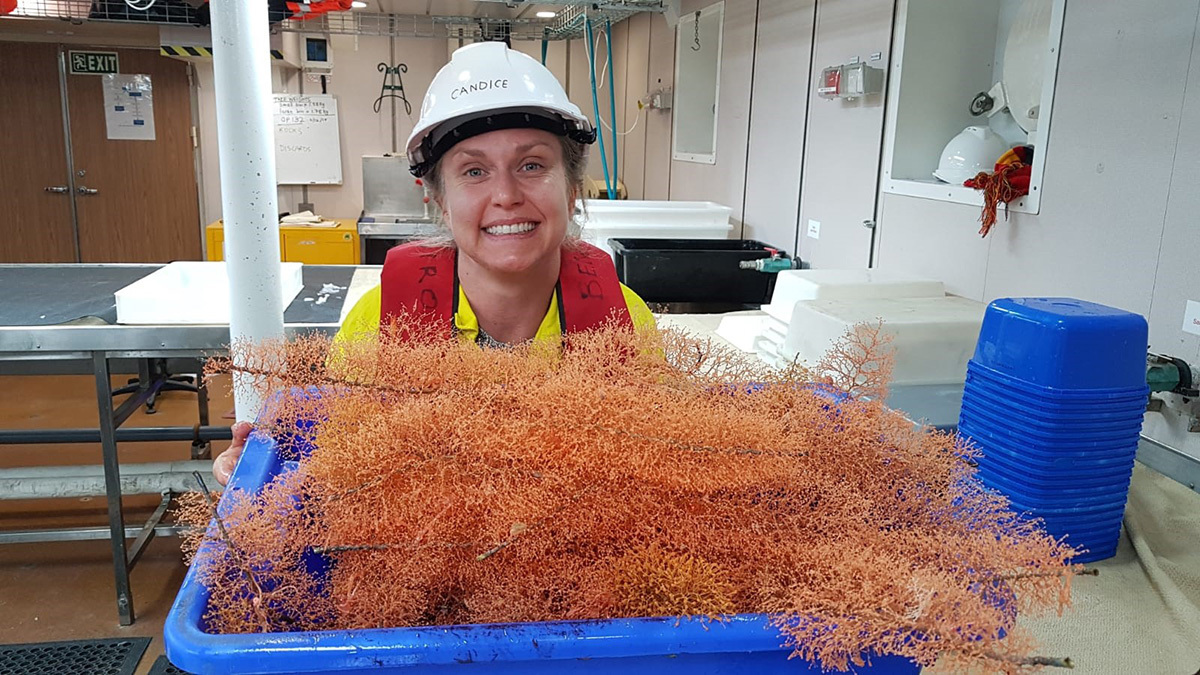
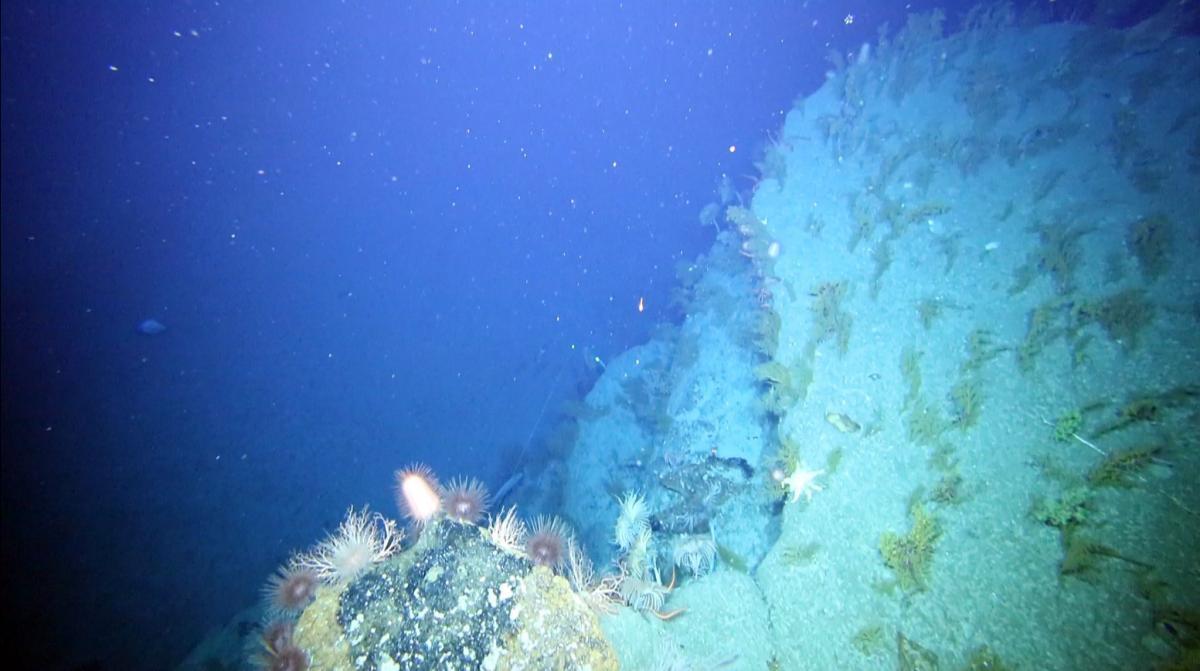
Notes on today's activities from Marine Biodiversity Hub Director, Nic Bax . . .
On the way north to the St Helens seamount off NE Tasmania, we deployed the two deepwater BRUVs at 900 metres on the slope in the Freycinet Marine Park. The fish community recorded here over a two-day period will provide an interesting comparison to the fish communities recorded at similar depths on the seamounts.
We arrived at St Helens at midday and proceeded immediately with the deep towed camera transects, taking advantage of the light winds to complete transects that would otherwise prove difficult when winds pick up. By midnight we had completed five of the eight transects, and completed one water column sample with the CTD above the peak of the seamount (about 590 m). There were extensive signs of trawling at the top of the seamount, unsurprising given the history of this seamount as the site of Australia’s most important orange roughy fishery. The four-lobed anemones that were first seen on an opportunistic survey five years ago were again present after about 650 m, but there was otherwise generally sparse fauna, with crinoids (especially on drop-offs), octocorals, urchins, black and gold corals. In one small depression between a drop-off and a boulder barrier, there were also yellow and white fan corals. Late in the day a beam trawl was prepared to sample this depression, requiring a quick deployment and retrieval for a two minute 150 m long tow.
A quiet day by some standards, but below decks videos were being scored, still images annotated for later quantitative scoring, and generally samples and data were being prepared and summarised so that we can easily continue the analyses after we step ashore. And on level seven, our marine bird and mammal observers continued to do just that (42 marine birds and eight marine mammals to date).
- Log in to post comments

